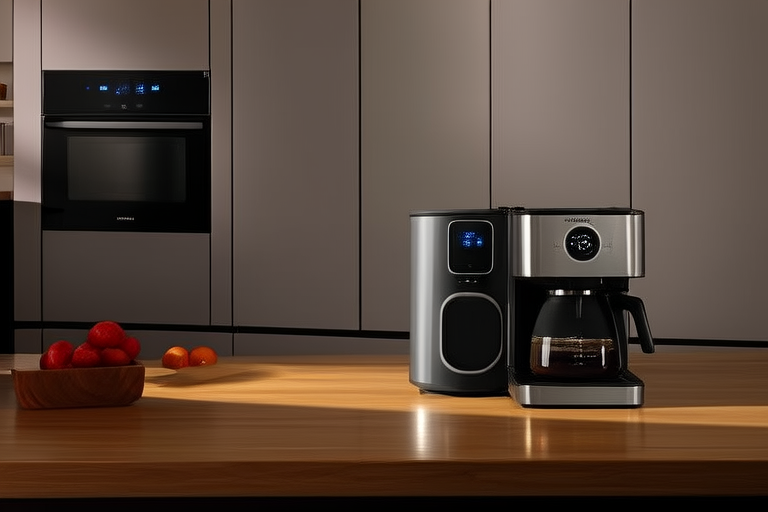Efficiency Meets Convenience: Exploring Top Smart Home Devices
Introduction
The concept of smart home devices has rapidly evolved over the past decade, transforming the way we interact with our living spaces. These devices leverage advanced technologies, including artificial intelligence, machine learning, and the Internet of Things (IoT), to create environments that are not only more efficient but also highly convenient. By automating routine tasks and offering real-time data and control, smart home devices enable users to manage their households with greater ease and precision.
One of the primary benefits of incorporating smart home technology is increased efficiency. For instance, smart thermostats can learn your preferences and adjust the temperature accordingly, leading to significant energy savings. Similarly, smart lighting systems allow you to schedule when lights turn on or off, reducing unnecessary power consumption. Moreover, these devices enhance convenience by enabling remote control and voice commands, making it possible to operate various aspects of your home from anywhere, at any time.
The trend towards integrating smart technology into homes continues to grow, driven by advancements in technology and increasing consumer demand for innovative solutions. As more people recognize the potential benefits of smart home devices, the market is expected to expand further, offering even more sophisticated and user-friendly options. This article will delve into some of the top smart home devices available today, highlighting their features, benefits, and the importance of seamless integration and security.
Top Smart Home Devices
Smart Thermostats
Smart thermostats are among the most popular and widely adopted smart home devices. They offer numerous features designed to improve energy efficiency and comfort. One of the standout advantages of smart thermostats is their ability to learn your preferences and adjust the temperature automatically based on your schedule. For example, the Nest Learning Thermostat from Google adapts to your routine and optimizes heating and cooling to save energy when you’re away or asleep.
Another notable feature of smart thermostats is remote control via mobile apps. This allows you to adjust the temperature settings from your smartphone or tablet, ensuring your home is always at the perfect temperature when you arrive. Additionally, some models, like the Ecobee SmartThermostat, offer occupancy sensors that detect when rooms are occupied and adjust the temperature accordingly. These features not only enhance comfort but also contribute to significant energy savings over time.
Smart Lighting Systems
Smart lighting systems provide a range of functionalities that go beyond traditional lighting controls. With smart bulbs and fixtures, you can dim the lights, change colors, and even schedule when they turn on or off. Products from brands like Philips Hue and LIFX offer extensive customization options, allowing you to create the perfect ambiance for any occasion. Voice control through virtual assistants like Amazon Alexa or Google Assistant adds another layer of convenience, enabling you to control your lights hands-free.
Advanced smart lighting systems also integrate seamlessly with other smart home devices. For instance, you can set up scenes that activate multiple lights simultaneously or link them to motion sensors for added security. These features make smart lighting systems an essential component of any modern, connected home.
Smart Security Cameras
Smart security cameras play a crucial role in enhancing home safety and peace of mind. These devices provide real-time monitoring of your property, allowing you to keep an eye on what’s happening even when you’re not at home. Features such as motion detection and two-way audio enable you to receive alerts and communicate with visitors or intruders remotely. Cloud storage options ensure that recorded footage is securely stored and easily accessible.
Popular brands like Arlo and Ring offer a variety of smart security camera models, each with unique features tailored to specific needs. For instance, Arlo Pro cameras come equipped with night vision, weatherproof housing, and battery-powered operation, making them ideal for outdoor installations. Meanwhile, Ring cameras integrate seamlessly with the Ring Alarm system, providing comprehensive home protection.
Smart Speakers and Assistants
Smart speakers have become indispensable tools for managing smart home ecosystems. Devices like Amazon Echo and Google Nest Hub serve as central hubs for controlling other smart devices, playing music, setting reminders, and providing weather updates. Voice recognition technology enables hands-free interaction, making it easier than ever to engage with your smart home environment.
In addition to basic commands, many smart speakers support complex routines and multi-step actions. For example, you can program your Echo to turn on the lights, adjust the thermostat, and start playing music all at once with a single voice command. This level of automation streamlines daily tasks and enhances overall convenience.
Smart Doorbells
Smart doorbells take home security to the next level by combining video streaming, motion detection, and two-way communication. Devices like the Ring Video Doorbell and August Doorbell Cam allow you to see and speak with visitors or delivery personnel from your smartphone or tablet. Motion detection triggers notifications, ensuring you never miss a visitor, while two-way audio lets you communicate directly with them.
These features not only enhance security but also offer convenience by eliminating the need to physically answer the door. You can screen deliveries, greet guests, or deter unwanted visitors without leaving your current location.
Smart Appliances
Smart appliances represent the latest frontier in home automation, bringing advanced technology to everyday kitchen and laundry tasks. Refrigerators, ovens, washing machines, and dryers are now available with built-in smart features that allow for remote control, scheduling, and performance monitoring. Brands like Samsung Family Hub and LG ThinQ offer intuitive interfaces and seamless integration with other smart home devices.
For example, the Samsung Family Hub refrigerator includes a large touchscreen display for managing grocery lists, viewing recipes, and even streaming entertainment. It can also send alerts when certain items need to be restocked or when food is about to expire. Similarly, LG ThinQ appliances connect to your Wi-Fi network, enabling you to monitor their status and adjust settings remotely.
Integration and Compatibility
One of the key advantages of smart home technology is the ability to integrate multiple devices into a unified system. This integration allows for more efficient management and control of various household functions. However, achieving this requires careful consideration of device compatibility and platform interoperability.
Most smart home devices are designed to work with popular virtual assistant platforms such as Apple HomeKit, Google Assistant, and Amazon Alexa. These platforms serve as central hubs, enabling users to control multiple devices with a single interface. For instance, you can use your smartphone or smart speaker to manage lighting, temperature, and security settings all at once.
To ensure smooth integration, it’s important to choose devices that are compatible with your preferred platform. Many manufacturers offer apps and APIs that facilitate cross-platform compatibility, allowing you to bridge gaps between different ecosystems. Additionally, open standards like Matter aim to simplify device interoperability by establishing common protocols that all smart home products can follow.
Privacy and Security Concerns
While smart home devices offer numerous benefits, they also raise important privacy and security concerns. These devices collect and transmit vast amounts of personal data, which could potentially be exploited if not properly protected. Common risks include unauthorized access to sensitive information, misuse of personal data, and vulnerabilities in software or hardware.
To mitigate these risks, it’s crucial to prioritize security best practices when setting up and maintaining your smart home ecosystem. Here are some tips for ensuring the security of your connected devices:
- Use Strong Passwords: Create unique, complex passwords for each device and avoid reusing them across multiple accounts.
- Enable Two-Factor Authentication: Where available, enable two-factor authentication to add an extra layer of security.
- Regularly Update Firmware: Keep all devices and software up to date with the latest security patches.
- Limit Access: Restrict permissions and access to sensitive data where possible.
- Secure Your Network: Use a strong password for your Wi-Fi network and consider setting up a guest network for visitors.
By taking these precautions, you can help protect your smart home devices from potential threats and enjoy the full benefits of this innovative technology.
Conclusion
In conclusion, smart home devices have revolutionized the way we live, offering unprecedented levels of efficiency and convenience. From smart thermostats and lighting systems to security cameras and appliances, there is a wide array of options available to suit every homeowner’s needs. By integrating these devices into a cohesive system, you can create a truly connected and intelligent home environment.
As the market continues to evolve, new innovations will undoubtedly emerge, further enhancing the capabilities and accessibility of smart home technology. We encourage readers to explore the possibilities and consider how smart home devices could benefit their own households. Whether you’re looking to save energy, improve security, or simply streamline daily tasks, there’s a smart solution out there waiting for you.


